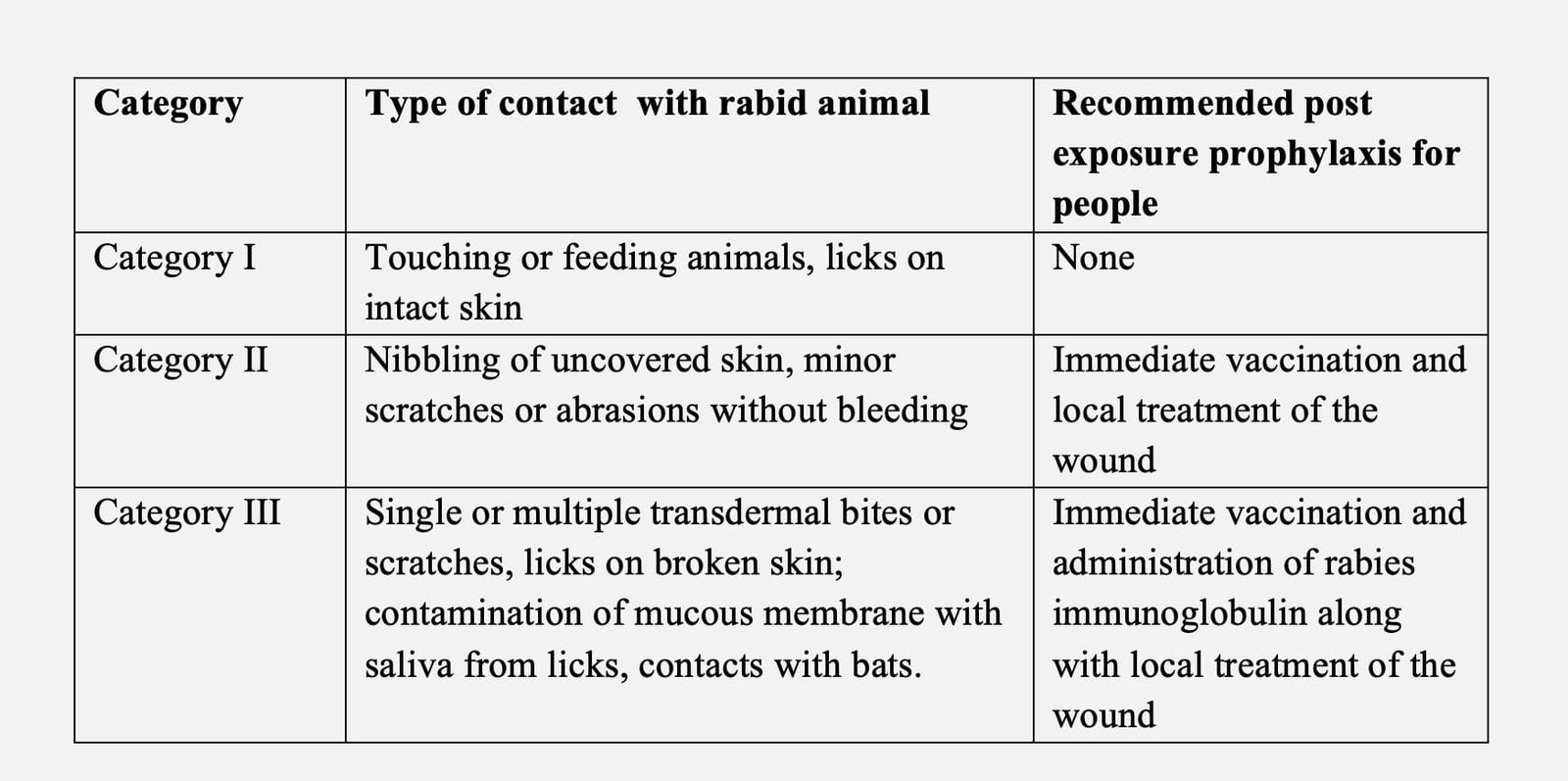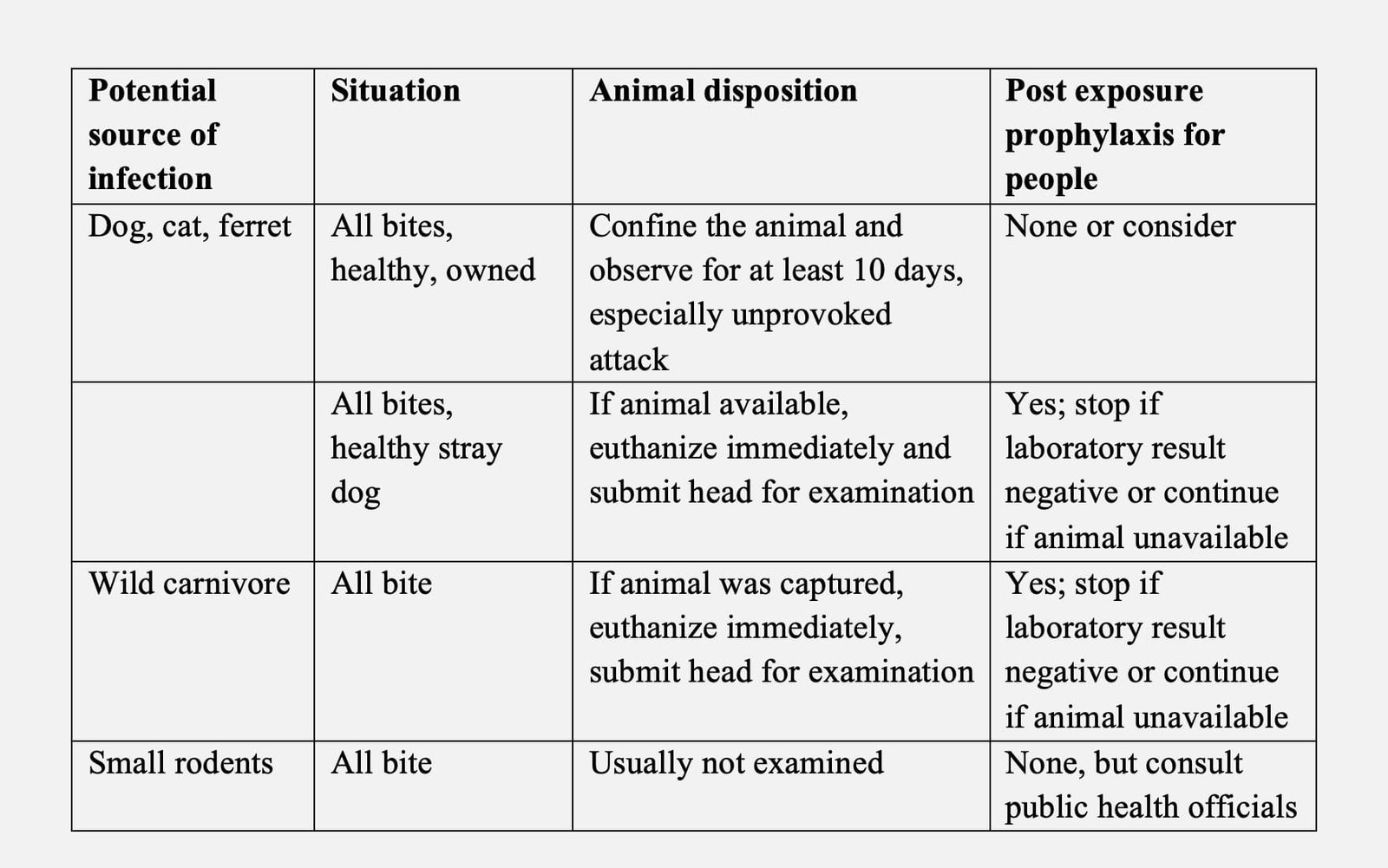TABLE OF CONTENTS
Prevention and Control of Rabies
For Prevention and Control of Rabies in dog population, vaccination of minimum 70% of dog should be necessary.
Vaccine Types
- Parenteral modified live vaccines
- Oral modified live vaccine
- Parenteral inactivated cell culture vaccine
- Oral or parenteral recombinant vaccine
- Nucleic acid vaccine
- Anti-rabies virus specific agents
1. Parenteral modified live vaccines
- Early vaccines were developed for virus grown in nervous tissue and later avian embryos
- Low egg passage vaccine (50 serial passage of virus in chicken embryo)
- High egg passage vaccine (180 serial passage of virus in chicken embryo- safe for dog)
2. Oral modified live vaccine
- Oral bait vaccine is used for vaccination of feral or wild animals
- SAG2 strain is avirulent strain
- Protective neutralizing antibody titre have been demonstrated for upto 2 years after vaccination
Pre Exposure Prophylaxis
- Inactivated cell culture vaccine administered to puppies and kitten at the age of 3 months and repeated one year later. Subsequent vaccinations are repeated every 1-3 yrs depending on the product and local health regulations.
- Vector recombinant rabies glycoprotein vaccine licensed for use in cat, which can be administered at the age of 8 weeks.
- Multiple dose primary canine rabies vaccination schedule with annual boosters may be considered for dogs in rabies endemic countries.
Management of suspected rabies cases (Exposure of Pets)
- Any unvaccinated dog, cat or ferret exposed to rabies is euthanized immediately. If owner unwilling to do this the animal should be placed in strict isolation (i.e no human and animal contact) for 6 months and vaccinated against rabies 1 month before release.
- If an exposed animal is currently vaccinated, it should be revaccinated immediately and closely observed for 45 days.
Control
- Notification of suspected cases
- Euthanasia of dog with clinical signs of rabies/ dog bitten by a suspected rabid animal
- Reduction of contact rate between susceptible dogs
- Dog movement control
- Mass vaccination by campaign
- Continuing vaccination of young dogs
- Stray dog control
- Dog registration
- Control of rabies in wildlife population relies on population reduction of wildlife
- Use of oral bait vaccine for control of rabies in wild animals
Zoonotic risk
- It is recommended for people in high risk groups such as veterinary staff, animal control officer, rabies diagnostic laboratory worker and some travellers working in canine rabies enzootic area
- Pre exposure vaccine is administered on days 0, 7 and 21 or 28
- However, in the event of subsequent rabies virus exposure and must be supplemented by a limited post exposure regimen (2 doses of vaccine I/M on days 0 and 3)
Post Exposure Prophylaxis
- Immediate washing and flushing wound with soap water, or water alone for 15 minutes
- Disinfection of wound with 70% ethanol, iodine (tincture or aqueous solution), or other substances with virucidal activity
- Bleeding at any wound site indicates potentially severe exposure and must be infiltrated with either human or equine rabies immunoglobulin
- Administration of antibiotics and tetanus prophylaxis
- If human unvaccinated previously infiltrate human rabies immunoglobulin 20IU at the site of bite on day 0-7 and also administer inactivated cell culture vaccine on day 0, 3, 7 and 14 and 28 I/M on upper deltoid region.
Categories of contact and recommended post exposure prophylaxis

Post exposure recommendations for rabies in human


